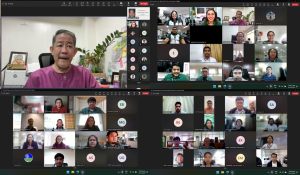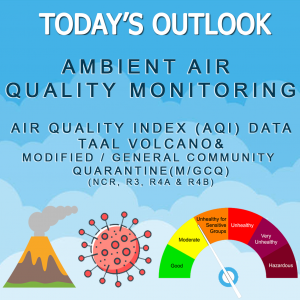
The Environmental Management Bureau (EMB) commenced the second batch of its meteorological training on air quality with an opening orientation held virtually via Microsoft Teams on November 11, 2024.
This initiative seeks to enhance the expertise of EMB personnel in meteorology and air quality management which are crucial components of sustainable environmental governance.
The event was attended by representatives from the EMB Central and Regional Offices, specifically from the Environmental Monitoring and Enforcement Division (EMED) and the Clearance and Permitting Division (CPD).
Mr. Geri Geronimo Sanez, Chief of the Environmental Quality Management Division (EQMD) of the EMB Central Office, underscored the importance of the training in bolstering the participants’ capabilities to address air quality challenges effectively. “This program is an integral step in equipping our personnel with advanced knowledge and tools to manage meteorological and air quality data,” he emphasized. “Such efforts are vital for implementing impactful environmental protection measures and fostering sustainable development,” Sañez added.
Engr. Jundy Del Socorro, Chief of the Air Quality Management Section, presented the meeting’s goal of fostering a deeper understanding of meteorological principles and their application in air quality monitoring and management. He elaborated on the learning the participants will gain such as interpreting weather data, assessing its impact on air quality, and applying these insights to decision-making processes in their respective roles.
Dr. Mayzonee Ligaray, Deputy Director for Research and Extension at the University of the Philippines – Institute of Environmental Science and Meteorology (UP-IESM) emphasized the institution’s recognition as a World Meteorological Organization (WMO) Regional Training Center, underscoring the credibility and significance of the program.
The course curriculum covered a range of critical topics including PAGASA 101, Synoptic Meteorology, Dynamic Meteorology, Physical Meteorology, Climatology, and Air Pollution Meteorology. Designed to combine theory and practice, the training promises to equip participants with the expertise to address complex meteorological issues and their implications on air quality. The participants were introduced to a distinguished panel of instructors whose expertise ensures a robust learning experience.
Dr. Ligaray outlined the program’s online delivery format, enabling participants from various regions to join seamlessly. To tailor the training to the needs of the participants and measure learning outcomes effectively, a pre-assessment test will precede the formal sessions.
A feedback mechanism hrough surveys was solicited to ensure continuous improvement in future iterations of the program.
The orientation marked a promising beginning for the second batch of meteorological training, enhancing the capacity of EMB personnel to address air quality issues comprehensively.
According to Engr. Sañez, “This initiative represents a significant stride toward a more robust and effective environmental management system within the EMB.” ###




















